I stood for four hours straight in Tempe City Hall on Tuesday evening listening to my neighbors claw their hearts out of their chests. They voiced concerns that a proposed ordinance would obstruct free assembly at public parks for people without the money or time to apply for permits. The floor of the rectangular room sloped down toward the raised platform where seven elected officials sat in front of my city, state, and country’s flags. I leaned against a pillar in the back, and craned my neck to see the line of dozens of people waiting to enter. Two overflow rooms would be filled.
Like many of the speakers, I believe that the ordinance is a flimsy, rushed attempt to flex more control over groups who feed people who are living on the street, or struggling to stay sheltered. Of the eighty-five who spoke for up to three minutes each, only eight spoke in favor. These few cited parks littered with drug paraphernalia and trash from group meals as their main reasons. “Neighborhood degradation.” And some colored in their commentary with dehumanizing rhetoric that I won’t repeat here. The mayor, vice mayor, and city council listened, too, and then they voted unanimously in favor. The new rules take effect August 1.
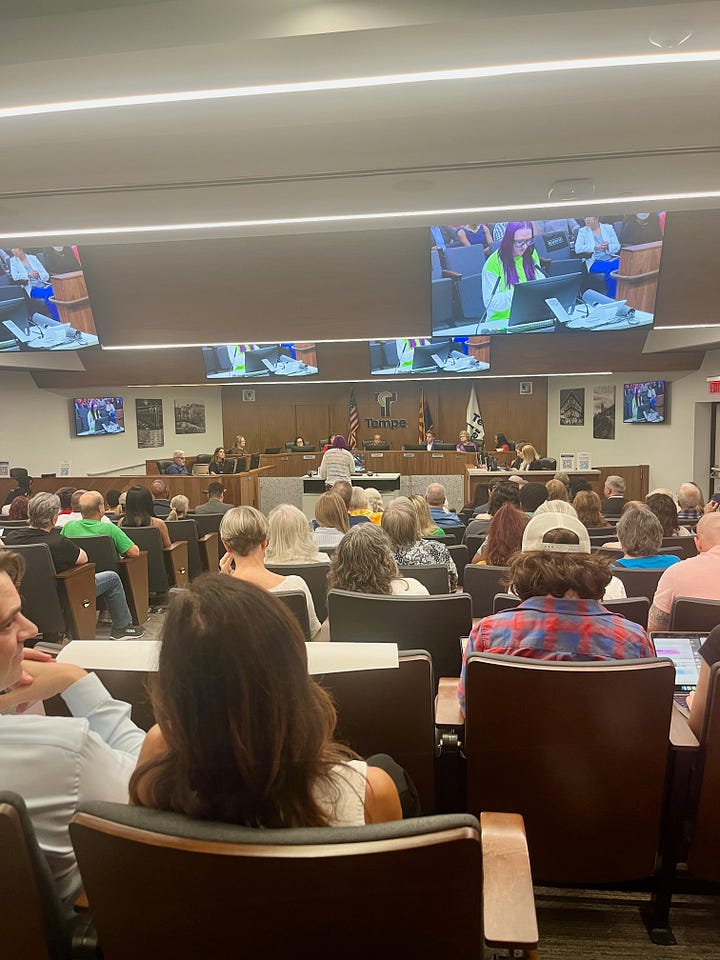
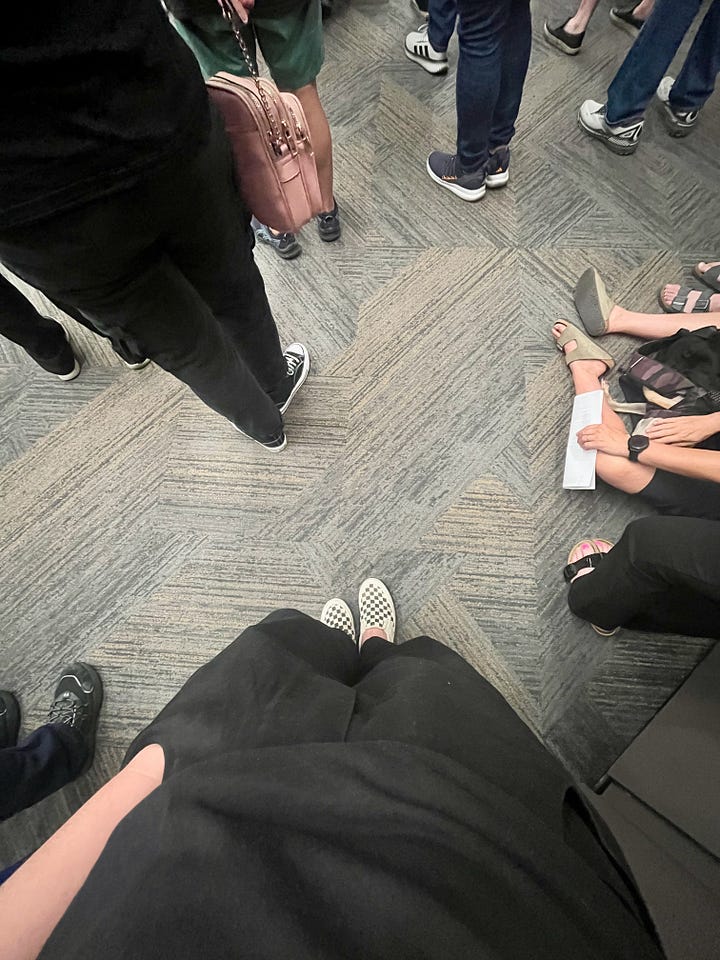
This is the depressing next step of a saga where people who provide basic rights, like meals and showers, to folks experiencing homelessness are threatened or cited by the city. Lauren De Young’s article filed after the vote is an excellent overview if you’re interested in diving further into my city’s dirty laundry. Something has changed. No longer is there an informal understanding between the local government and the people providing mutual aid as we inch farther into another deadly summer. And from what I observed, the mayor and council aren’t changing even when faced with public outcry.
Tempe is in the middle of a housing and heat crisis. The number of families and elders who are living on the street are rising. Saying the city-level resources are inadequate is an understatement. I walked to my car, sweating. The low that night was 95 degrees F.
After 1 am I was home, watching on my phone, but there was still a small crowd in person. The last handful of speakers were either profuse in their gratitude that the council was still listening, or barely contained their disgust that the evening had gone on so long (on both sides of the issue.) After public comments, Mayor Corey Woods spoke about how the intention of the ordinance isn’t to discriminate. Then Vice Mayor Doreen Garlid and Councilmember Berdetta Hodge professed their care for all their constituents and spoke of the hundreds of people in favor of the ordinance who weren’t at the meeting. They suggested that this not-present contingency was too intimidated to attend. No recognition that the work of feeding each other is essential. No acknowledgement that even a minor fee could become cost-prohibitive for a mutual aid group. Finally, Hodge told the crowd, "You represent the minority," and shortly after they voted. The unanimity was only surprising in its blunt tenacity. Not one elected official paused to reconsider. Not even those up for reelection in the coming year. I could hear the booing over the livestream until I locked my phone.
Tempe City Hall is an inverted pyramid of glass and metal, partially sunken below street level. There’s a labyrinthine walkway around the bottom level that’s eerie in the moonlight. Originally known as the Tempe Municipal Building, it was completed in 1971 by local father and son architects Kemper and Michael Goodwin.
In a pre-build rendering of the building, there are lush green spaces on three sides stretching to the mountains. Reading about the architects, and their focus on energy-saving and sustainable design, I'd like to think they knew the importance of green space for more than looks. But I wonder if they would have welcomed people on their lawns regardless of housing status. I wonder if they would let people feed each other under their trees. What, in the minds of developers and city governments, is the point of green spaces? The rendering only shows people walking on the sidewalks.
As long as I’ve known the pyramid building, it’s been surrounded by concrete and asphalt, hemmed in by the downtown that's grown since the 70s. There’s no green expanse nearby, no park, little shade. But there are a growing number of people who could use a soft spot to rest and eat.
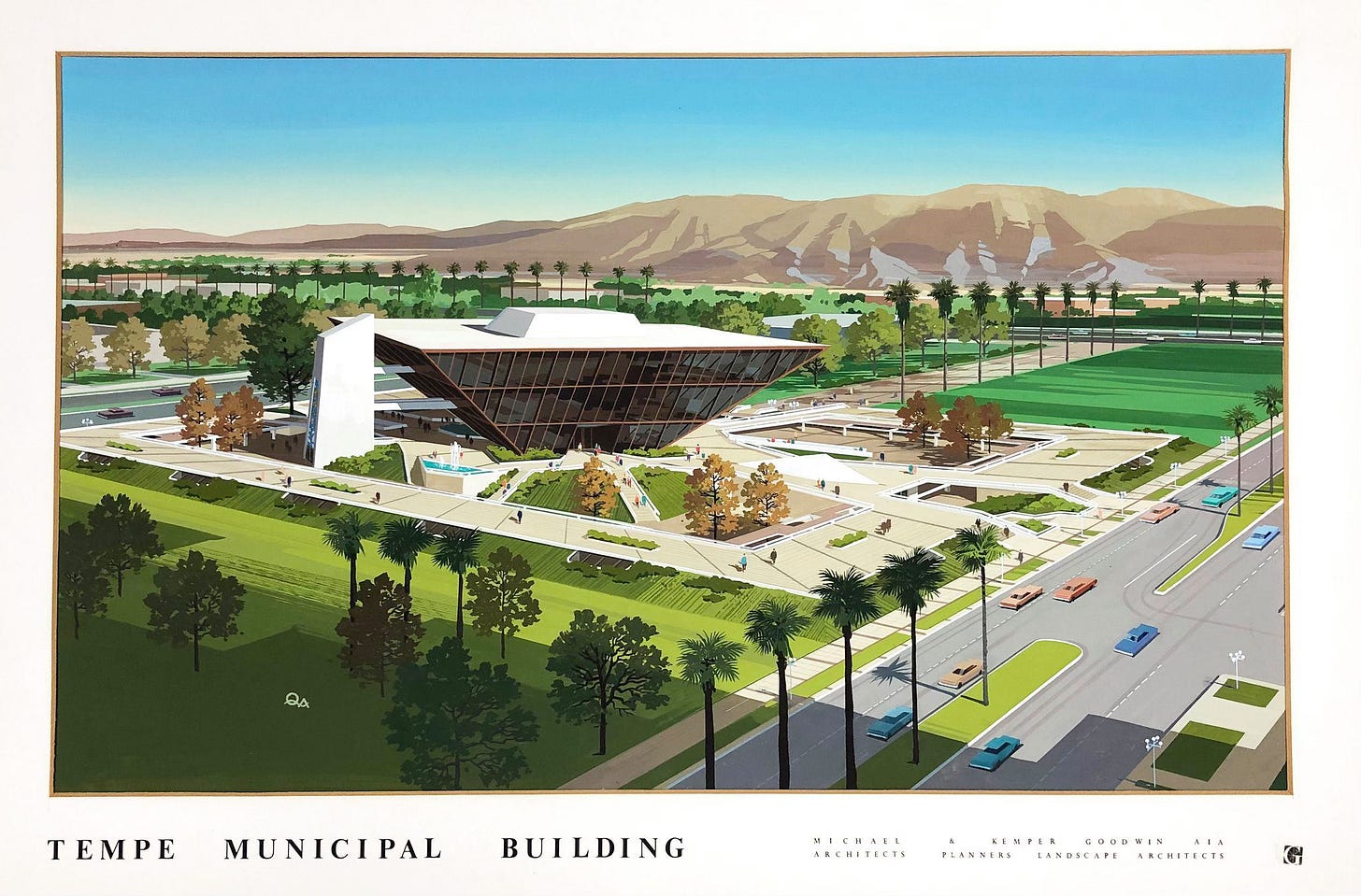

Paid Subscriber Chat Today at 1pm PST / 4pm EST
Join my paid subscriber chat on TOMATO TOMATO, the Discord server that Alicia Kennedy started and is the place to be for conversations on food, culture, ecology, and more. Find the link in my latest Substack chat or email me for the link once you upgrade to paid — we begin in The Good Enough Weekly channel at 1pm PST.
The Good Enough Weekly comes out on Fridays, alternating essays, interviews, and blog posts on food, climate, and labor. Rooted in the Sonoran Desert.




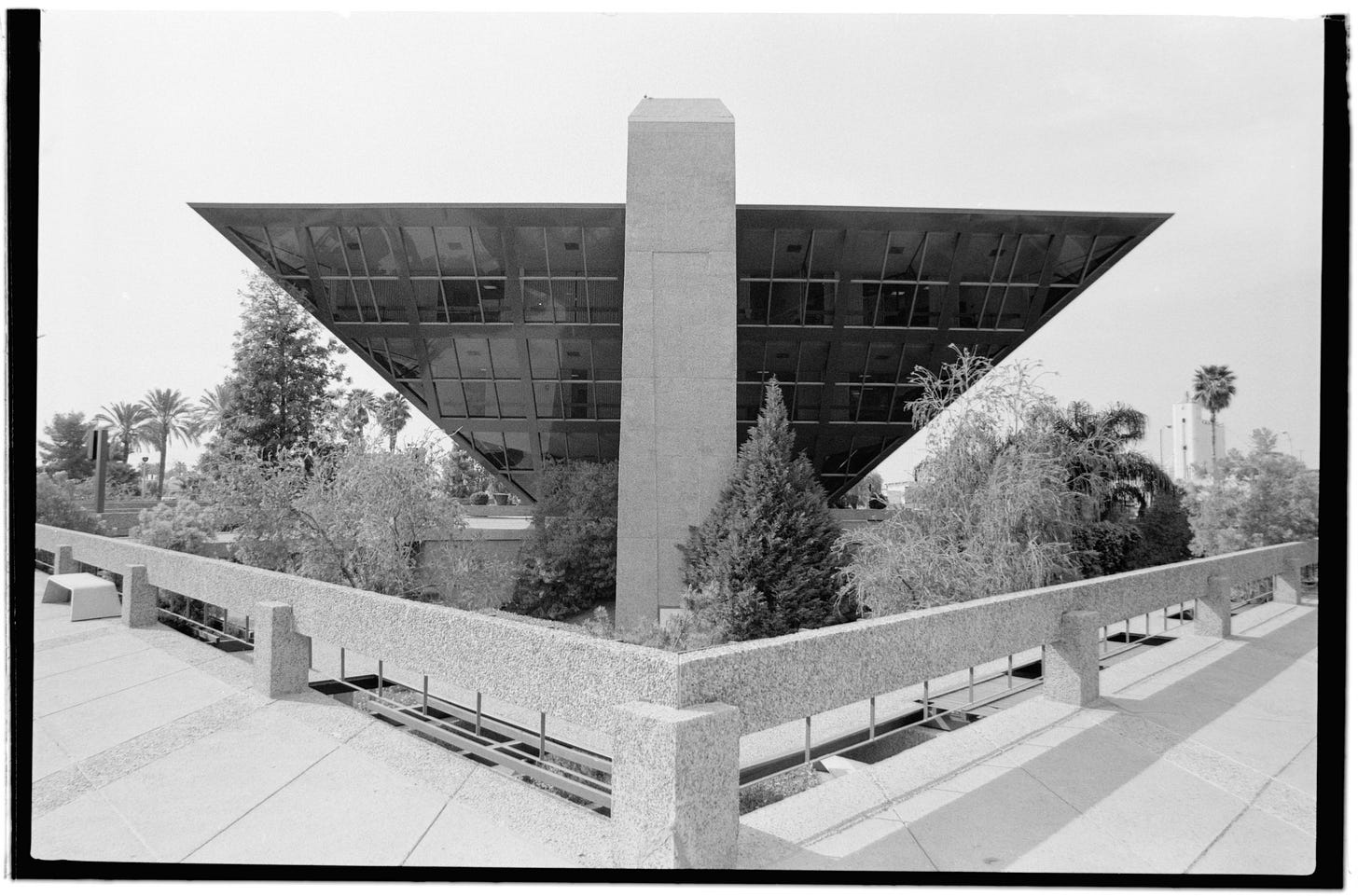
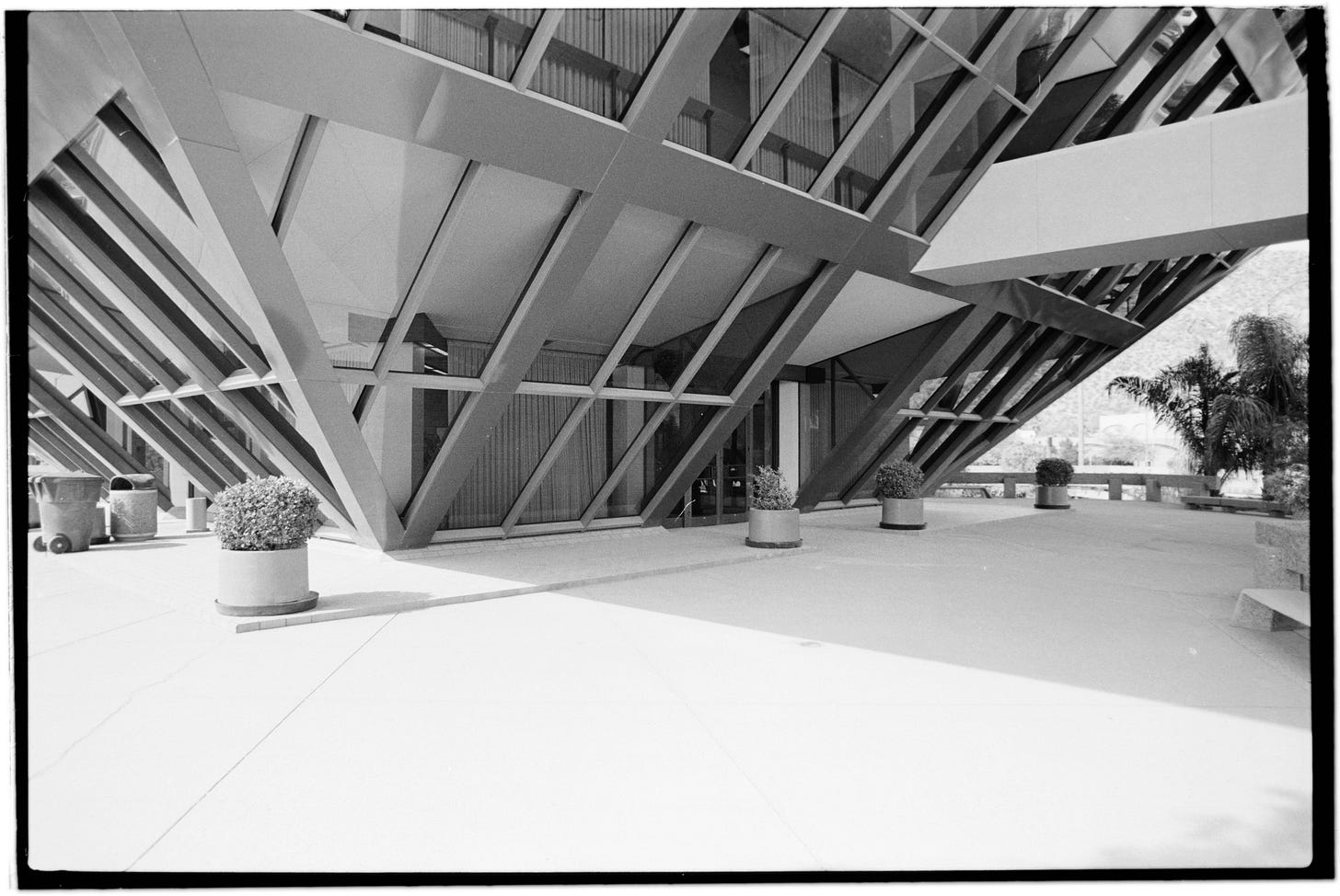
The politicians citing hundreds of people ‘at home’ who agree with the ordinance has me reeling a bit. Along with everything.